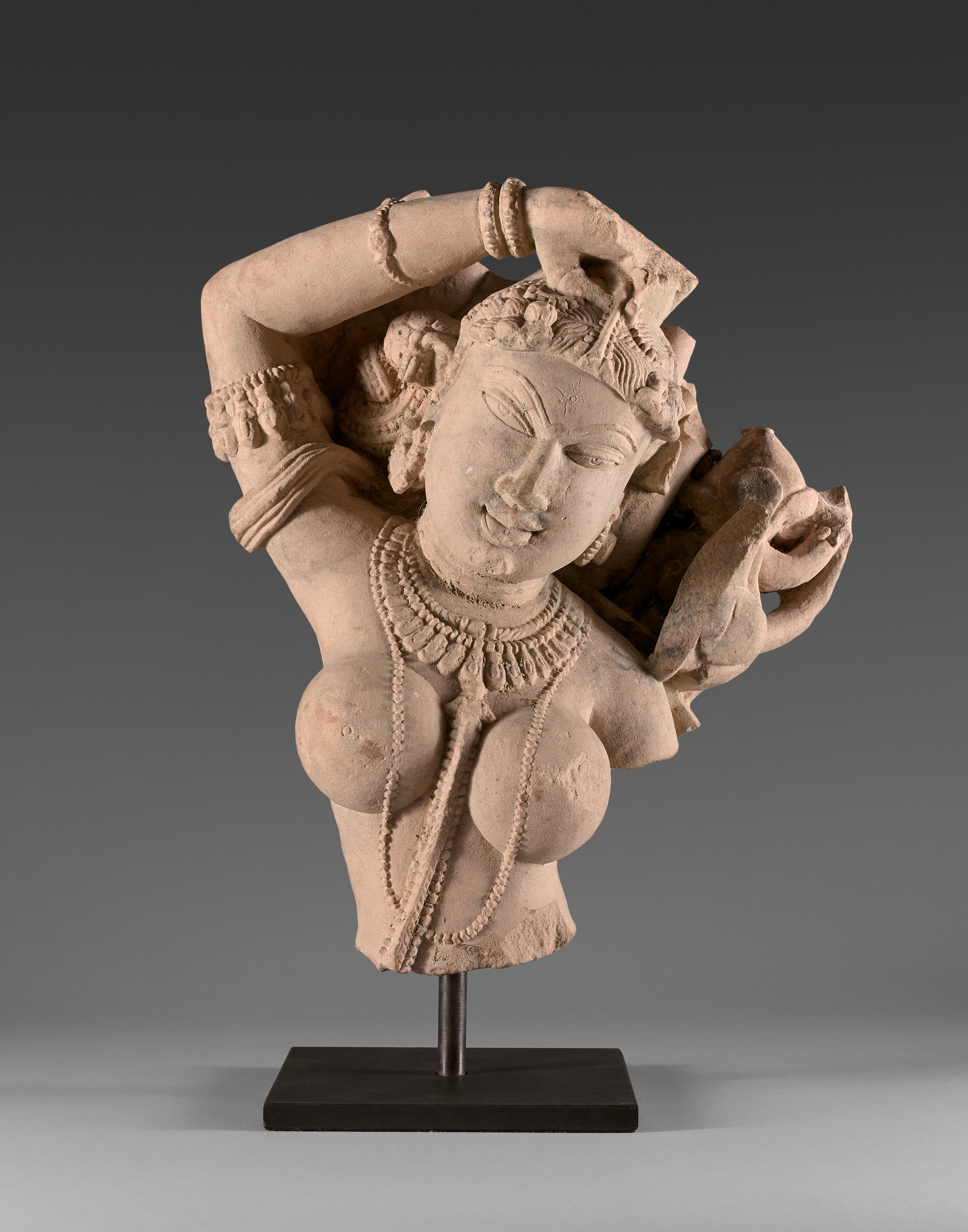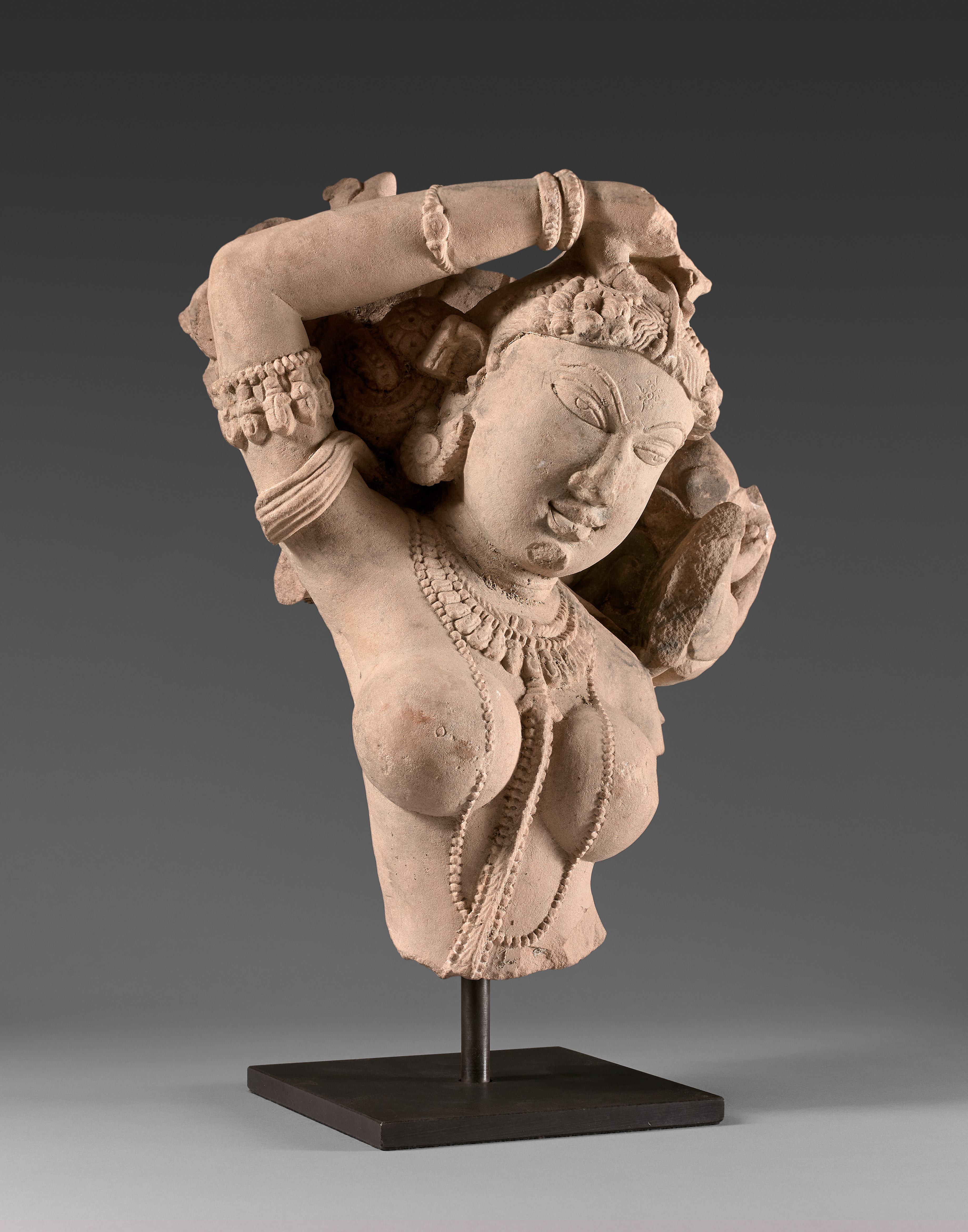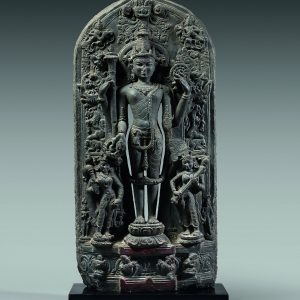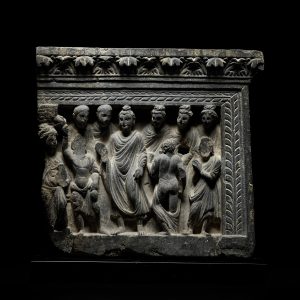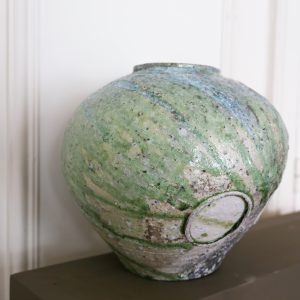Bust of Śālabhaṅjikā
Sandstone
India
11th- 12th century
H. 30 cm or 11 ⅞ in
Description
Expressive and sensual, this bust of Śālabhaṅjikā is of voluptuous beauty and perfectly illustrates the Indian medieval art of the 11th-12th centuries. Made of sandstone and measuring 30 cm in height (11 ⅞ in), it can be compared to the female figures of Madhya Pradesh or Rājasthān. This piece exalts the Indian canon of feminine beauty, defined by its fluid and sensual lines, and evoking abundance and fertility. With her right arm raised, her head slightly bent, the pose of this Śālabhaṅjikā shows a dynamic and lively flexion. She is probably standing under a tree of which only very fragmentary foliage remains. It is interesting to observe that this delicately and sensually modelled bust contrasts with the face with marked and accentuated features. The very wide almond-shaped eyes are underlined by particularly arched eyebrows carved in high relief. Her hair gathered in a magnificent bun with a complex arrangement of numerous pearl braids, she is also wearing multiple necklaces and bracelets, with large and sophisticated earrings: this jewellery is characteristic of northern India.
This work reflects a number of artistic variants, making it possible to evoke a more provincial context. For example, the deity wears an armband consisting of pearls with pendants, a fantasy of the workshop that created this sculpture. The movement also differs: instead of replacing the bindu on her forehead, a classical gesture, she here readjusts a jewel in her hair.
The sensual depiction of such a female figure, standing under abundant fruit-bearing or flowering trees, are a popular theme over many centuries in Indian temple sculpture. Symbolizing prosperity, they adorn the temples as much as they protect them and are beneficial to the devotees who look at them.
Provenance: Private collection, UK.

